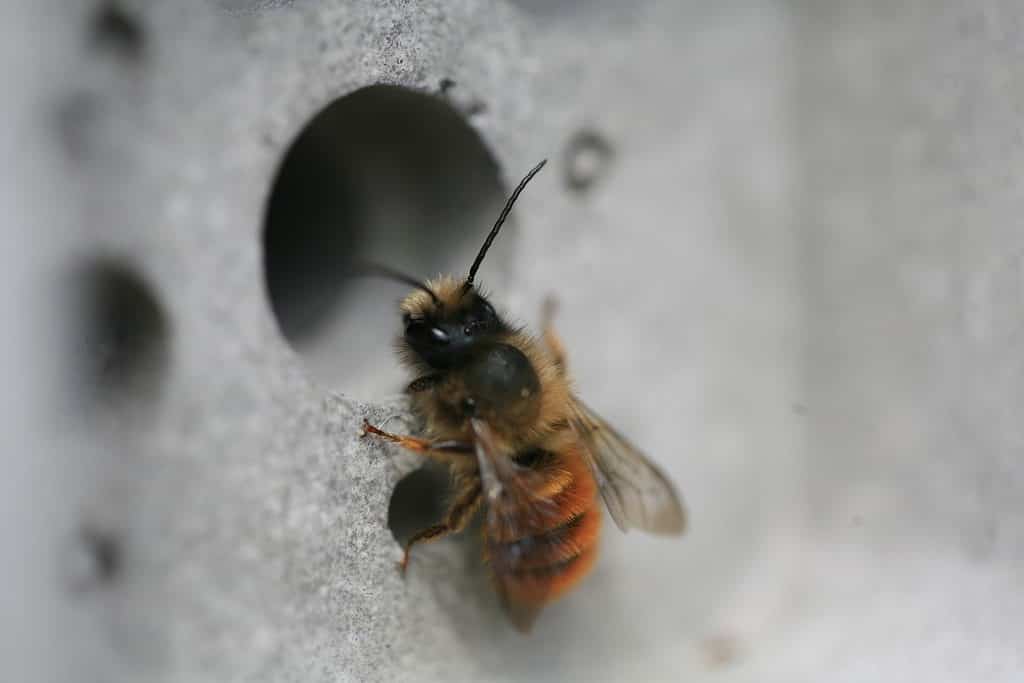Although many associate bees with hives, bees living alone make up the majority of the world’s bee species. In the case of the United Kingdom, solitary bees make up almost 250 of the approximately 270 species of bees. Creating suitable habitats for them should be a priority, researchers argued, who are suggesting the extensive use of a bee brick.

It’s no news that bees are in decline. Beekeepers and researchers have been reporting for decades the declining numbers in bees due to habitat loss, pesticide exposure and poor nutrition. Modern building materials, methods and styles can remove bees’ natural habitats, making cities and buildings inadequate places for bees to live in.
But what if we could incorporate bee-friendly habitats into buildings? Researchers in the UK came up with the design of a bee brick, which can be incorporated into the stonework of a new building, or even replace some bricks in older buildings. It’s aimed at providing a habitat to solitary bees, and it’s already being tested in cities in the UK.
A new home for bees
Artificial nesting habitats for solitary bees have been studied since the early 1900s and used since the 1950s, when the use of some species for pollinating commercial crops was first considered. Nests were set up by researchers in the forms of drilled holes in wood, red stems, lengths of bamboo, paper tubes and styrofoam containers, among many other materials.
Bee Bricks imitate the hollows in which bees develop. They have 18 cavities molded part-way into the otherwise solid structure, and can be done in different colors. There’s no ongoing maintenance and the bees represent no threat to the occupants of the building. For the team, the brick is a “fit and forget” component of construction.
“It’s aimed to create nesting habitat for cavity-nesting bees and wasps within sub/urban communities,” the researchers wrote in their paper. “It was designed to be an integral part of the build, offering the dual function of being a construction material that also promotes biodiversity. It should sit alongside current green systems as sedum roofs.”
The bricks can be installed in external walls, in boundary walls, and used within landscaping, the researchers said. They should be set up in direct sunlight and bee-friendly plants should be planted nearby to ensure a sufficient food supply. The bricks should also be positioned at least 0.75 meters from the ground, with no upper height limit.
Initial trials of the Bee Bricks were conducted in Cornwall, south-west UK, across two main sites in 2019, which were continued until last year. While occupancy of the bricks was low, bees were found in bricks of all colors and on both urban and rural sites. Following the trials, the bricks were incorporated into the construction and planning policy and practice.
For example, the city of Brighton has recently stipulated that a Bee Brick must be included in the vast majority of its new builds and Cornwall recommends that a Bee Brick be included in 50% of new builds. Over 21,000 bricks have been sold in Europe, Brazil, the US, Canada and New Zealand (which equals the capacity of 350,000 nesting sites), the researcher said.
However, questions remain about their effectiveness in improving biodiversity. Dave Goulson, a professor of biology at the University of Sussex, told The Guardian the brick holes weren’t deep enough to be homes for bees. He highlighted the risk of developers using the bricks to greenwash the impact of the construction sector and call for more substantial action.
The study was published in the International Journal of Sustainable Design.









